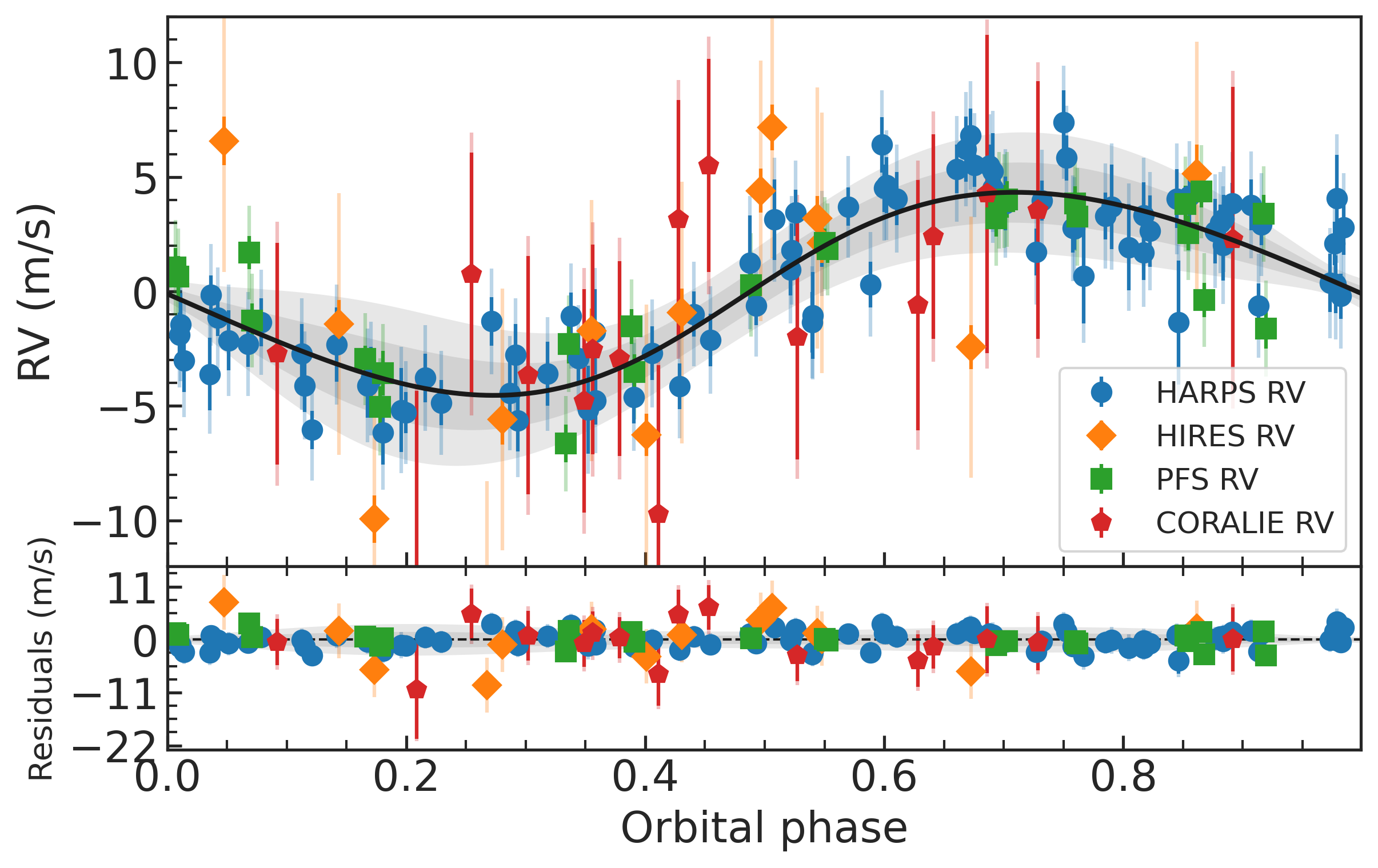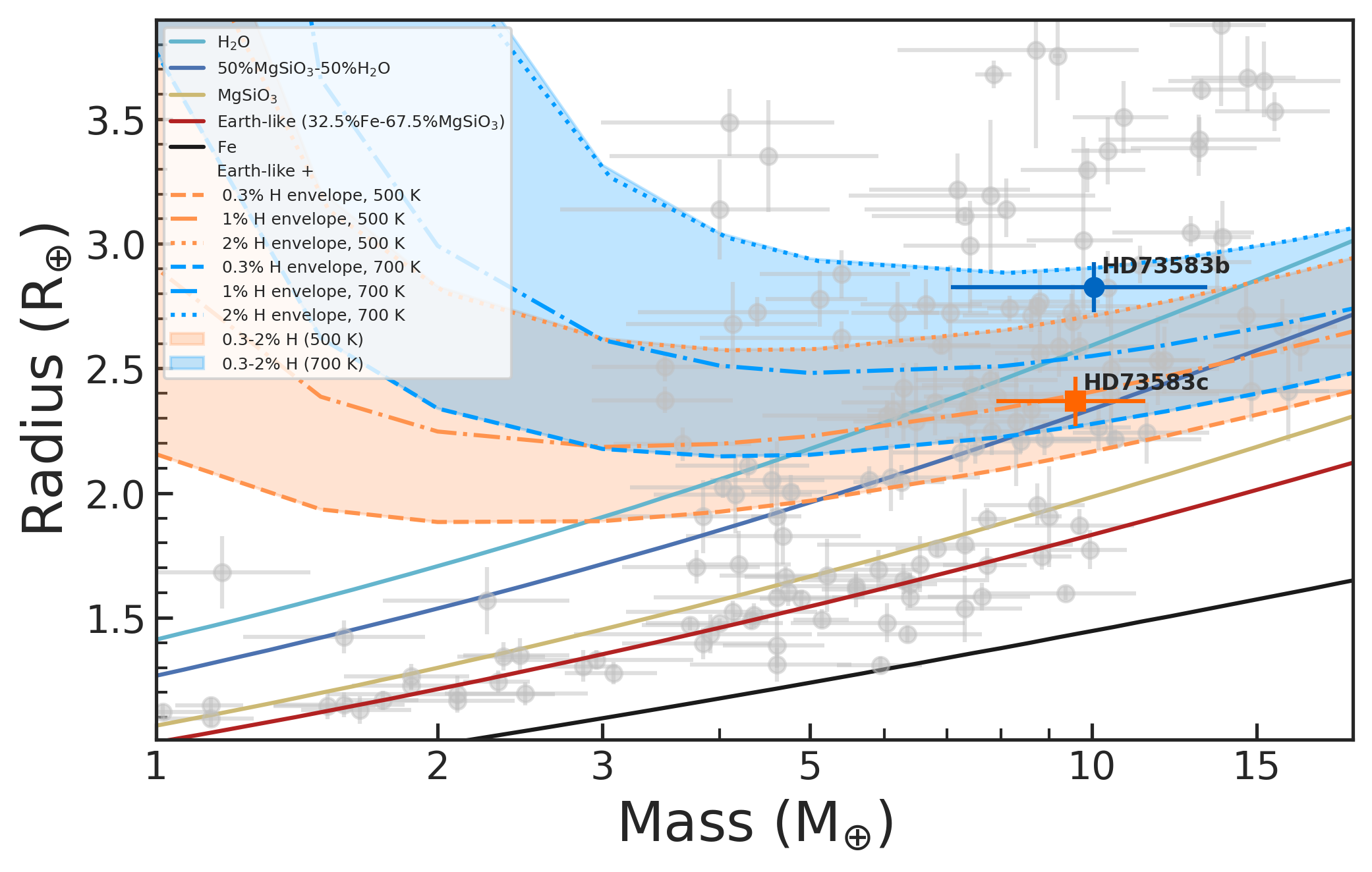The young HD 73583 (TOI-560) planetary system
Posted on Fri 22 October 2021 in exoplanets
Two 10-M⊕ mini-Neptunes transiting a young, bright, and active K dwarf
Today in ArXiv, new mass measurements for two transiting young mini-Neptunes orbiting HD 73583 (TOI-560)! If you want to know more about this exciting system with weird properties characteristics of such a young system, give a look at the paper and/or this blog

This story starts on February 02 2019, when TESS started its Sector 8 observations in the field including the young star HD 73583. These data revealed the existence of one transit-like signal with a period of 6.4 d caused by the transiting HD 73583 b.

Two years later, TESS re-observed HD 73583 in Sector 34, and oh surprise! HD 73583 b was there, but two new transit signals with no counterpart on S8 also appeared. We later found that these signals were caused by HD 73583 c, another transiting planet with a period of 19 d.

But TESS was just the beginning, we got an amazing transit follow-up. For example, we got this beautiful transit of HD 73583 b with CHEOPS

And a lot of more transit observations with NGTS, LCO and PEST. You can see the portrait with all the transit here. All this data gave us the planetary radii of 2.8 and 2.4 R⊕ for planets b and c, respectively. Time to get the masses…

But like in all good stories, there has to be a villain. In this story, the villain is the stellar signal that is inherent in young stars like HD 73583. In the animation below we can see how the sunspot in the Sun generate signals in our RV and activity indicators. This complicates the mass measurement of the transiting planets...

We collected a handful number of spectroscopic observations with HARPS, HIRES, PFS and CORALIE. And nobody was surprised that we found that our RVs were full of stellar activity.
But we are not afraid of stellar activity, because Rajpaul et. al (2015) taught us that it is possible to infer the stellar signal in our RV time series using a multi-dimensional Gaussian process (MDGP) framework using the stellar activity indicators.
And fortunately, we have experience dealing with these problems. Like in the case of K2-100 (another young planetary system), it is possible to infer the stellar signal using activity indicators such as the Calcium II H & K that tells us what is going on on the stellar surface.
So we use the new version of pyaneti that includes the MDGP framework to model our RV and Calcium II H & K time series for all our available spectroscopic data. If you want to know more about this new pyaneti, check the recently accepted paper!
The MDGP did its magic, and we were able to model the stellar and planetary signals in our RVs and S-index. Look at this animation of how the stellar and planetary signals collaborate in order to model our RV data.

Here you can see how the induced Doppler signal of each planet looks like. These signals translate into masses of 10 M⊕ for both planets!


We got masses and radii for the two young planets HD 73583 b and c. We can put them in a mass-radius diagram and try to infer their composition. We can see that they both have similar masses, but significantly different radii

We can see that the innermost planet is larger than the outer one. This is not what we would expect if we assume that the system was shaped with photo-evaporation, oh oh!
But we note that the planets are not highly irradiated, so maybe the photo-evaporation is not playing an important role. And, let’s remember that the system is young, so the system may still be evolving and mass-loss processes have not finished sculpting the system...

And I know that we say that we expect that photo-evaporation may not be significant. But that does not mean that it is not happening...
We estimated that planets b and c have a mass-loss rate of 2-4e10 g/s and 5.4e9 g/s, respectively. We also estimated that it is possible to observe signatures of mass-loss on H and He lines. It would not be necessarily easy, but hey atmospheric people, this is a nice challenge.
As a summary, HD 73583 b and c are a significant contribution to the small sample of well-characterised young exoplanets. This is also the first well-characterised young multi-planet system that will allow performing comparative atmospheric composition and mass-loss studies.
And of course, this discovery is not only about how we translated our photon collection into young worlds. This paper also collects brilliant minds that make an amazing constellation of coauthors that make this paper amazing. Thank you all!